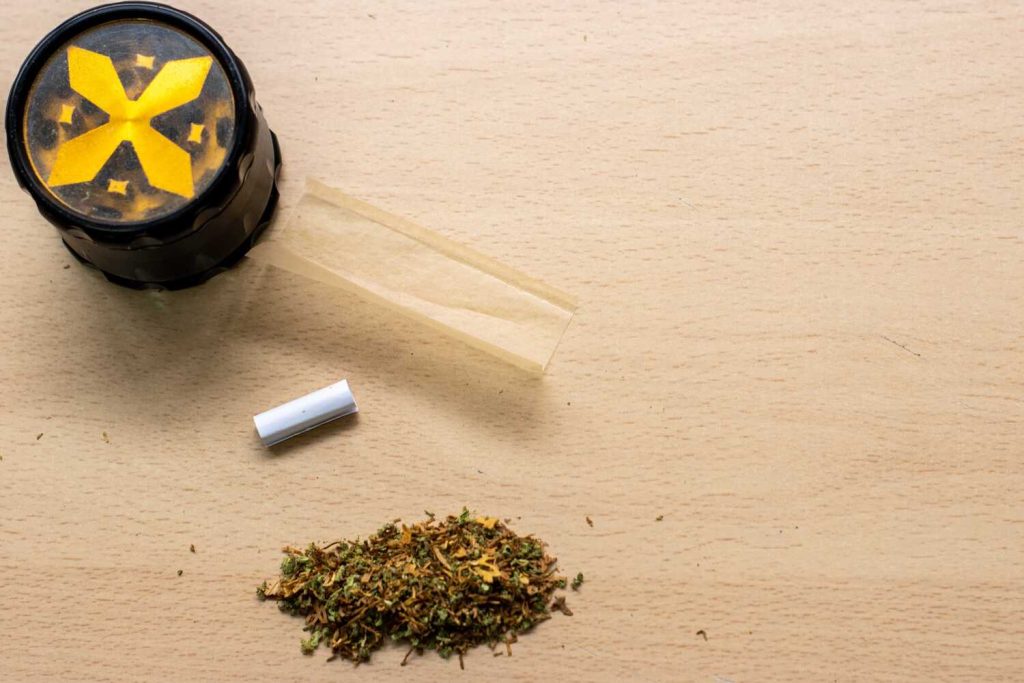Marijuana for Chronic Inflammatory Demyelinating Polyneuropathy (CIDP)
- Nicholas DiBella
- Published: October 15, 2024
- Fact-checked by Dr. Desiree Granados

Chronic Inflammatory Demyelinating Polyneuropathy (CIDP) is a rare neurological disorder that can severely impact the quality of life for those affected. Traditional treatments may not always provide adequate relief, leading many to explore alternative options such as medical marijuana.
In this article, we’ll explore whether cannabis might help alleviate symptoms of CIDP, how to obtain a medical marijuana card for the condition, and some methods for using cannabis to manage symptoms.
Does Marijuana Help With Chronic Inflammatory Demyelinating Polyneuropathy (CIDP)?
Medical marijuana has been shown to potentially help people with CIDP manage their symptoms. While research is still evolving, studies suggest that cannabinoids—compounds found in marijuana—may have neuroprotective and anti-inflammatory properties, which could help reduce the chronic inflammation and nerve damage associated with CIDP.
CBD (cannabidiol) and THC (tetrahydrocannabinol), two primary cannabinoids, have shown promise in addressing neuropathic pain, a common symptom of CIDP. Some research points to THC’s ability to bind to receptors in the nervous system, helping to alleviate pain, while CBD is often recognized for its anti-inflammatory effects. Patients with CIDP may find relief from pain, muscle weakness, and mobility issues when incorporating cannabis into their treatment regimen.
That said, it’s essential to consult with a healthcare provider before using medical marijuana for CIDP to ensure it’s the right fit for you.

What is Chronic Inflammatory Demyelinating Polyneuropathy and What Are Its Symptoms?
Chronic Inflammatory Demyelinating Polyneuropathy (CIDP) is an autoimmune disorder where the body’s immune system attacks the myelin sheath, the protective covering of nerves. This leads to progressive nerve damage, particularly in the peripheral nerves, which can cause long-term disability if untreated. CIDP is often compared to Guillain-Barré Syndrome (GBS), but unlike GBS, CIDP progresses slowly and can become chronic.
Common symptoms of CIDP include:
- Gradual muscle weakness, particularly in the arms and legs
- Loss of sensation in the extremities
- Numbness and tingling
- Impaired reflexes
- Fatigue and difficulty walking
- Neuropathic pain
The exact cause of CIDP is still unknown, but it is believed to be autoimmune in nature. Traditional treatment approaches include corticosteroids, immunoglobulin therapy, and plasma exchange. However, these methods can have significant side effects, prompting some patients to explore alternatives like medical marijuana for symptom management.
Can You Get a Medical Marijuana Card for Chronic Inflammatory Demyelinating Polyneuropathy?
You can obtain a medical marijuana card for Chronic Inflammatory Demyelinating Polyneuropathy (CIDP) in the states of Illinois and Montana. It is important to note that chronic pain is a qualifying condition in half of the United States, which may apply to individuals with CIDP.
In states such as New York, Virginia, and Washington D.C., doctors can prescribe medical marijuana to any patient they believe would benefit from treatment. It is important to check your local laws as the application process, and qualifying conditions may vary state to state.
If you’re interested in pursuing medical marijuana to manage your CIDP symptoms, you can start the process by obtaining a medical marijuana card. You’ll need a recommendation from a certified physician who can evaluate your condition and determine whether cannabis is a suitable option.
How to Use Marijuana for Chronic Inflammatory Demyelinating Polyneuropathy
There are several ways to use medical marijuana for CIDP, and the best method depends on your specific symptoms and preferences. Here are some common methods of cannabis consumption that might benefit those with CIDP:
- Smoking or Vaping: This method offers rapid relief, which can be beneficial for sudden onset pain. However, some individuals may prefer not to smoke due to lung sensitivity or other respiratory concerns.
- Edibles: These provide longer-lasting relief but take longer to take effect. Edibles can be helpful for those with chronic pain and mobility issues that require consistent relief throughout the day.
- Topical Creams: Cannabis-infused creams can be applied directly to painful areas, providing localized relief without psychoactive effects. This can be useful for patients experiencing nerve pain or inflammation in specific parts of the body.
- Oils or Tinctures: These are versatile methods that allow for precise dosing and can be used sublingually or added to food and beverages.
The Sanctuary recommends consulting with a medical marijuana doctor to discuss which method may be best suited for managing your CIDP symptoms. Check out our guide on edibles vs. smoking for more details on these methods.
What Are the Best Marijuana Strains for Chronic Inflammatory Demyelinating Polyneuropathy?
Choosing the right strain of cannabis can make a significant difference in symptom management for CIDP. Indica strains, known for their relaxing and sedative effects, are often recommended for pain and muscle relaxation, while sativa strains can provide an energizing effect that may help with fatigue.
For more information on the differences between indica and sativa strains, check out our guide on Indica vs. Sativa.
Here are some strains that might help with CIDP:
- Harlequin (Hybrid): High in CBD, this strain may offer anti-inflammatory benefits and pain relief without strong psychoactive effects.
- Granddaddy Purple (Indica): Known for its sedative properties, this strain is often used to manage pain and muscle spasms.
- ACDC (CBD-Dominant Hybrid): High in CBD, ACDC may help reduce inflammation and neuropathic pain without causing a “high.”
Conclusion
While medical marijuana cannot cure CIDP, it might offer relief from many of the symptoms associated with the condition, such as pain, inflammation, and muscle weakness. By consulting with a medical marijuana doctor and obtaining a medical marijuana card, you can explore whether cannabis might be an effective part of your treatment plan.
If you need assistance getting started, The Sanctuary Wellness Institute is here to help. Visit our site to book an appointment and learn more about how to obtain a medical marijuana card.
States Where We Offer Medical Marijuana Card Services
How we reviewed this article:
- Carmen Navarrete, Adela García-Martín, Alain Rolland, Jim DeMesa, and Eduardo Muñoz (2021). Cannabidiol and Other Cannabinoids in Demyelinating Diseases
https://www.ncbi.nlm.nih.gov/pmc/articles/PMC8001020/ - Seegehalli M. Anil, Hadar Peeri, and Hinanit Koltai (2022). Medical Cannabis Activity Against Inflammation: Active Compounds and Modes of Action
https://www.ncbi.nlm.nih.gov/pmc/articles/PMC9124761/ - Vania Modesto-Lowe, MD, MPH, Rachel Bojka, MS, PA-C and Camille Alvarado (2018). Cannabis for peripheral neuropathy: The good, the bad, and the unknown
https://www.ccjm.org/content/85/12/943 - Cleveland Clinic (2023). CIDP (Chronic Inflammatory Demyelinating Polyneuropathy)
https://my.clevelandclinic.org/health/diseases/cidp-chronic-inflammatory-demyelinating-polyneuropathy - Leafly (2024). Harlequin
https://www.leafly.com/strains/harlequin - Leafly (2024). ACDC
https://www.leafly.com/strains/acdc
Current Version
October 15, 2024
Written By
Nicholas DiBella
Fact-checked By
Dr. Desiree Granados
Editorial Process
Our Editorial Process

Nicholas DiBella received his psychology degree from West Chester University of Pennsylvania and has been writing content for the Sanctuary Wellness Institute since 2023. He is passionate about all things health & wellness.







